

汽车工程 ›› 2024, Vol. 46 ›› Issue (10): 1920-1927.doi: 10.19562/j.chinasae.qcgc.2024.10.018
收稿日期:2023-12-21
修回日期:2024-03-09
出版日期:2024-10-25
发布日期:2024-10-21
通讯作者:
韩勇
E-mail:Yonghanxmut@gmail.com
基金资助:
Yong Han1,2( ),Yuecong Zhang1,Mingwang Li1,Di Pan1,2,Haiyang Zhang3
),Yuecong Zhang1,Mingwang Li1,Di Pan1,2,Haiyang Zhang3
Received:2023-12-21
Revised:2024-03-09
Online:2024-10-25
Published:2024-10-21
Contact:
Yong Han
E-mail:Yonghanxmut@gmail.com
摘要:
有无紧急制动(AEB)的正面碰撞工况中驾驶员姿态对运动学响应及损伤风险具有重要影响。本文采用THUMS(Ver.6.1)人体有限元模型建立了标准、后仰和前倾等3种驾驶姿态,搭建了正面碰撞约束系统模型,进行了6组50 km/h的仿真实验,对比分析驾驶员不同姿态在有和无AEB作用下的运动学响应以及驾驶员头、胸部损伤参数。结果表明:在有和无AEB介入时,后仰姿态的头部损伤风险均最高,其中有和无AEB介入的HIC15分别为817.5和626.9。AEB的介入对驾驶员胸部压缩量影响最大,3种姿态的胸部压缩量分别增大了89%、115%和22%,后仰姿态胸部压缩量损伤最严重。研究结果厘清了驾驶姿态与AEB对驾驶员运动学响应以及头、胸部损伤的影响,为汽车约束系统和AEB的开发与设计提供了参考价值。
韩勇,张悦苁,李明旺,潘迪,张海洋. AEB工况下驾驶员姿态对损伤风险的影响[J]. 汽车工程, 2024, 46(10): 1920-1927.
Yong Han,Yuecong Zhang,Mingwang Li,Di Pan,Haiyang Zhang. Effect of Driver Posture on Injury Risk Under AEB Conditions[J]. Automotive Engineering, 2024, 46(10): 1920-1927.
表6
不同工况下颅脑、肋骨和心肺部损伤分布"
| 项目 | 工况1 | 工况2 | 工况3 | 工况4 | 工况5 | 工况6 | |
|---|---|---|---|---|---|---|---|
颅内 压力 |  |  | 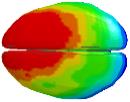 | 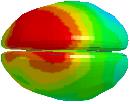 | 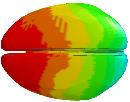 | 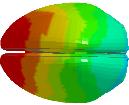 |  |
| 139.00 kPa | 132.50 kPa | 265.23 kPa | 257.45 kPa | 132.77 kPa | 143.23 kPa | ||
肋骨塑 性应变 |  | 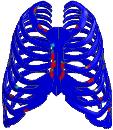 | 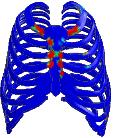 |  | 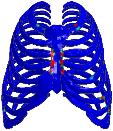 | 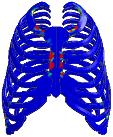 | 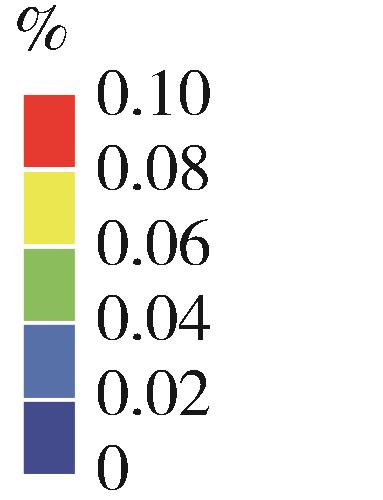 |
| 3.38% | 3.87% | 6.67% | 1.6% | 4.47% | 4.00% | ||
心肺器 官压力 | 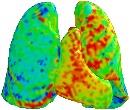 | 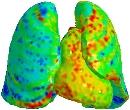 | 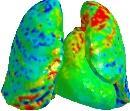 | 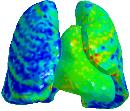 |  | 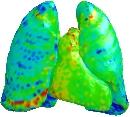 |  |
| 心脏:485.08 kPa | 心脏:461.76 kPa | 心脏:1.09 MPa | 心脏:416.85 kPa | 心脏:487.12 kPa | 心脏:552.16 kPa | ||
| 肺部:383.50 kPa | 肺部:302.10 kPa | 肺部:398.11 kPa | 肺部:348.17 kPa | 肺部:332.43 kPa | 肺部:278.43 kPa |
| 1 | 中国人民共和国国家统计局. 中国统计年鉴2022[M]. 北京: 中国统计出版社, 2022. |
| National Bureau of Statistics of P.R China. China statistical yearbook 2022[M]. Beijing: China Statistics Press, 2022. | |
| 2 | 许慧杰. 面向中国乘员体征的车辆25%偏置碰撞仿真及约束系统优化[D]. 重庆: 重庆大学, 2021. |
| XU Huijie. Vehicle 25% overlap frontal impact analysis and restraint system optimization for Chinese occupants dummy[D]. Chongqing:Chongqing University,2021. | |
| 3 | LEE Lijian, ZHANG Liang, CHEN Alicia, et al. Survey of front passenger posture usage in passenger vehicles[C]. Society of Automotive Engineers (SAE) 2004 World Congress & Exhibition, 2004: 2004-01-0845. |
| 4 | 李月明, 王鹏翔, 张毅, 等. 自动紧急制动对约束系统保护功能影响的研究[J]. 汽车技术, 2022(10): 16-23. |
| LI Yueming, WANG Pengxiang, ZHANG Yi, et al. Study on effect of autonomous emergency braking on the protection function of restraint system[J]. Automobile Technology, 2022(10): 16-23. | |
| 5 | 武和全, 边楚虹, 胡林, 等. 汽车自动驾驶过程中不同姿态乘员在追尾碰撞中的损伤研究[J]. 中国机械工程, 2023, 34(13):1628-1637. |
| WU Hequan, BIAN Chuhong, HU Lin, et al. Research on injury of occupants with different postures in rear end impacts during automatic driving[J]. China Mechanical Engineering, 2023, 34(13):1628-1637. | |
| 6 | KIM Jinkyoo. A study on the characteristics of occupant injury severity at different positions of seat adjustments[C]. Asia Pacific Automotive Engineering Conference, 2013: 2013-01-0015. |
| 7 | BOSE D, CRANDALL J R, UNTAROIU C D, et al. Influence of pre-collision occupant parameters on injury outcome in a frontal collision[J]. Accident Analysis & Prevention, 2010, 42(4): 1398-1407. |
| 8 | JU Haimeng, SHEN Hui, SUN Ya, et al. Damage of body by changing sitting position inclination angle in frontal crash[J]. Mechanical Engineering and Automation, 2015(5): 26-27. |
| 9 | HYND D, CARROLL J, CUERDEN R, et al. Restraint system safety diversity in frontal impact accidents[C]. Conference Proceedings International Research Council on the Biomechanics of Injury, IRCOBI, 2012: 114-129. |
| 10 | SCHOENEBURG R, BAUMANN K, JUSTEN R. PRE-SAFE The next step in the enhancement of vehicle safety[C]. 18th ESV int’l Tech Conf Proc. Japan, 2003: 19-22. |
| 11 | 邹铁方, 刘前程, 魏亮. 加装传统AEB后的未避免事故典型碰撞场景与事故特征[J]. 汽车工程, 2023, 45(6): 1062-1072. |
| ZOU Tiefang, LIU Qiancheng, WEI Liang. Typical collison scenarios and accident characteristics of accidents not avoided after installing traditional AEB[J]. Automotive Engineering, 2023, 45(6): 1062-1072. | |
| 12 | FILDES B, KEALL M, BOS N, et al. Effectiveness of low speed autonomous emergency braking in real-world rear-end crashes[J]. Accident Analysis & Prevention, 2015, 81: 24-29. |
| 13 | 崔东, 祁志楠, 张慧. 紧急制动下的驾驶员运动姿态变化与碰撞损伤研究[J]. 汽车工程, 2020, 42(8): 1060-1065. |
| CUI Dong, QI Zhinan, ZHANG Hui. Study on the motion posture change and crash injury of driver under autonomous emergency braking[J]. Automotive Engineering, 2020, 42(8): 1060-1065. | |
| 14 | 何丽, 吴春颖, 彭伟强, 等. 智能汽车场景下乘员保护虚拟仿真研究[J]. 中国汽车, 2023(5): 21-27. |
| HE Li, WU Chunying, PENG Weiqiang, et al. Research on virtual simulation of occupant protection in intelligent vehicle scenarios[J]. China Auto, 2023(5): 21-27. | |
| 15 | 韩勇, 李永强, 许永虹, 等. 基于VRUs深度事故重建的AEB效能对头部损伤风险的影响[J]. 汽车安全与节能学报, 2021, 12(4): 490-498. |
| HAN Yong, LI Yongqiang, Xu Yonghong, et al. Effectiveness of AEB system for head injury risk based on VRUs in-depth accident reconstruction[J]. Journal of Automotive Safety and Energy, 2021, 12(4): 490-498. | |
| 16 | 曹立波, 欧阳志高, 贾寓词, 等. 自动紧急制动与可逆预紧安全带共同作用下乘员损伤分析[J]. 中国机械工程, 2016, 27(16): 2259-2266. |
| CAO Libo, OUYANG Zhigao, JIA Yuci, et al. Analyses of occupant injury affeeted by combination of autonomous emergency braking and reversible pretensioner seatbelts[J]. China Mechanical Engineering, 2016, 27(16): 2259-2266. | |
| 17 | 孙振东, 朱海涛, 彭伟强, 等. 汽车预碰撞制动下乘员离位影响及参数优化分析[J]. 汽车工程, 2023, 45(1): 112-118. |
| SUN Zhendong, ZHU Haitao, PENG Weiqiang, et al. Analysis on the influence of occupant displacement and parameter optimization under pre-crash braking condition[J]. Automotive Engineering, 2023, 45(1): 112-118. | |
| 18 | TOYOTA Motor Corporation. Total human model for safety (THUMS)[EB/OL]. 2021. http://www.lstc.com/thums. |
| 19 | SINGH H, GANESAN V, DAVIES J, et al. Vehicle interior and restraints modeling development of full vehicle finite element model including vehicle interior and occupant restraints systems for occupant safety analysis using THOR dummies[R]. Washington: National Highway Traffic Safety Administration, 2018. |
| 20 | 石亚周, 周华, 肖凌云, 等. 汽车正面碰撞中驾驶人应急姿态下的损伤影响分析[J]. 西华大学学报(自然科学版), 2019, 38(2): 42-47. |
| SHI Yazhou, ZHOU Hua, XIAO Lingyun, et al. Analysis of damage effects of drivers’ emergency stance in frontal impact of vehicle[J]. Journal of Xihua University (Natural Science Edition), 2019, 38(2): 42-47. | |
| 21 | 唐灿, 李平飞, 黄海波, 等. 汽车正面碰撞中驾驶人坐姿对其损伤影响研究[J]. 中国安全科学学报, 2017, 27(3): 54-58. |
| TANG Chan, LI Pingfei, HUANG Haibo, et al. Research on effect of posture on injury to driver in frontal collision[J]. China Safety Science Journal, 2017, 27(3): 54-58. | |
| 22 | RIDELLA S A, SCARBORO J M, RUPP J D, et al. Improving injury causation analysis and coding in CIREN using the Bio Tab method[J]. Berichte Der Bundesanstalt Fuer Strassenwesen. Unterreihe Fahrzeugtechnik, 2010(77) [2023-08-31]. |
| 23 | PARENTEAU C, VIANO D. Field data analysis of rear occupant injuries part I: adults and teenagers[C]. SAE Paper 2003 - 01-0153. |
| 24 | 胡远志, 梁永福, 蒋成约, 等. 人体有限元模型THUMS用于正面碰撞乘员损伤研究[J]. 汽车安全与节能学报, 2015, 6(4): 379-383. |
| HU Yuanzhi, LIANG Yongfu, JIANG Chengyue, et al. Application of the occupant injury investigation in frontal crash based on THUMS model[J]. Journal of Automotive Safety and Energy, 2015, 6(4): 379-383. | |
| 25 | 水野幸治, 韩勇. 汽车碰撞安全[M]. 北京: 人民交通出版社, 2016. |
| MIZUNO K,HAN Yong. Car collision safety[M].Beijing: China Communications Press Co.,Ltd., 2016. | |
| 26 | C-NCAP管理中心. C-NCAP管理规则(2021版)[S]. 天津:中汽中心汽车测评管理中心, 2021. |
| C-NCAP Management Center. C-NCAP management rules (2021 edition) [S]. Tianjin: China Automotive Technology and Research Center Vehicle Evaluation and Management Center, 2021. | |
| 27 | HOLLOWELL W T, GABLER H C, STUCKI S L, et al. FMVSS NO. 208[S]. The United States: National Highway Traffic Safety Administration (NHTSA), 1966. |
| 28 | WILLINGER R, BAUMGARTNER D, CHINN B, et al. Head tolerance limits derived from numerical replication of real world accidents[C]. IRCOBI Conference. Montpellier, 2000: 209-221. |
| 29 | JOEL D S, JOSEPH M C, JOSEPH T B. Defining regional variation in the material properties of human rib cortical bone and its effect on fracture prediction[J]. Stapp Car Crash Journal, 2003(47): 243-265. |
| 30 | JESSE RUAN, RAED EL-JAWAHRI, LI CHAI, et al. Prediction and analysis of human thoracic impact responses and injuries in cadaver impacts using a full human body finite element model[C]. 47th Stapp Car Crash Conference, 2003: 2003-22-0014. |
| 31 | 任立海, 罗志秦, 陈浩, 等. 假人与人体模型在AEB作用下的驾驶员离位响应对比[J]. 汽车安全与节能学报, 2023, 14(4): 448-456. |
| REN Lihai, LUO Zhiqin, CHEN Hao, et al. Comparison of driver's out-of-position response of dummy and human models under AEB[J]. Journal of Automotive Safety and Energy, 2023, 14(4): 448-456. | |
| 32 | JONAS ÖSTH, KATARINA BOHMAN, LOTTA JAKOBSSON. Evaluation of kinematics and restraint interaction when repositioning a driver from a reclined to an upright position prior to frontal impact using active human body model simulations[C]. IRCOBI Conference. Porto, 2020. |
| [1] | 赵庆波,伏小龙,吴志国,张晓乾,韩帅,吴思. 不同肩带力、夹紧锁舌或限力插锁对正面刚性墙碰撞中二排HIII-5F假人响应影响研究[J]. 汽车工程, 2024, 46(5): 906-912. |
| [2] | 白先旭,左瑜,李维汉,石琴,李楚照,赵树廉,陈炯. 自动紧急制动系统控制模块的SOTIF量化评价[J]. 汽车工程, 2023, 45(9): 1655-1665. |
| [3] | 邹铁方,刘前程,魏亮. 加装传统AEB后的未避免事故典型碰撞场景与事故特征[J]. 汽车工程, 2023, 45(6): 1062-1072. |
| [4] | 刘永涛,刘传攀,刘湘安,陈轶嵩,乔洁. 基于自适应采样时间MPC的自动紧急制动系统[J]. 汽车工程, 2023, 45(1): 32-41. |
| [5] | 曾小华,钱琦峰,宋大凤,高皓铭,吴佳俊. 紧急制动工况下的纵向车速估计方法[J]. 汽车工程, 2022, 44(9): 1425-1436. |
| [6] | 谈东奎,胡港君,朱波,金来,张捷. 考虑预期功能安全的智能汽车自动紧急制动系统[J]. 汽车工程, 2022, 44(6): 799-808. |
| [7] | 韩勇,林丽雅,何勇,潘迪,蔡鸿瑜,彭倩,冯浩. 电动两轮车骑车人紧急避让姿态对损伤风险的影响研究[J]. 汽车工程, 2022, 44(5): 764-770. |
| [8] | 唐洪斌,张君媛,刘国军. 正面碰撞等级预估方法[J]. 汽车工程, 2022, 44(3): 392-398. |
| [9] | 李海岩,苏航杰,祝贺,刘冲,王彦鑫,崔世海,贺丽娟,王一达,吕文乐. 中国体征3岁儿童乘员损伤仿生模型在C-NCAP正面碰撞测试仿真中的应用[J]. 汽车工程, 2022, 44(12): 1944-1953. |
| [10] | 刘刚,洪亮,葛如海. 面向“离位”儿童乘员的常开式安全气囊优化设计[J]. 汽车工程, 2022, 44(1): 94-104. |
| [11] | 郭祥靖,孙攀,邓杰,刘勇,刘壮,刘双平. 基于BP神经网络算法预测的重型半挂汽车列车AEB控制策略研究[J]. 汽车工程, 2021, 43(9): 1350-1359. |
| [12] | 兰凤崇,刘迎节,陈吉清,蓝庆生. 可变附着系数路面上的自动紧急制动避撞安全策略研究[J]. 汽车工程, 2021, 43(7): 1105-1112. |
| [13] | 宋祥文,邹猛,许述财,黄彬兵. 误使用工况下儿童安全座椅安全性的开发与验证[J]. 汽车工程, 2021, 43(12): 1780-1786. |
| [14] | 武和全, 彭金平, 邓晓顺, 金鑫, 胡林. 正面碰撞中的老年驾驶员胸部响应研究*[J]. 汽车工程, 2020, 42(8): 1050-1059. |
| [15] | 兰凤崇, 余蒙, 李诗成, 陈吉清. 考虑预碰撞时间的自动紧急制动系统分层控制策略研究*[J]. 汽车工程, 2020, 42(2): 206-214. |
|